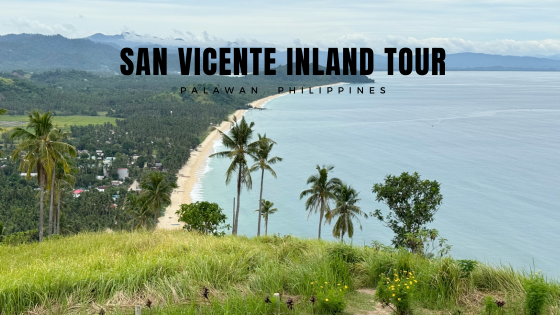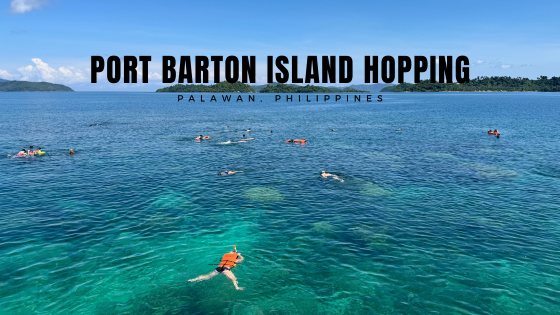Paoay, Ilocos Norte is not only known for its UNESCO World Heritage Paoay Church but also for its Sand Dunes, the serene Paoay Lake and the legacy of the Marcoses in Malacañang of the North.

Paoay can be reached by riding a jeepney from Batac, Ilocos Norte. First thing to check is the baroque church of Paoay located few meters away from the highway. After seeing the UNESCO World Heritage Site in Paoay, I hired a tricycle to tour me around Paoay. Getting a tricycle is a better idea since no public transportation is available going to Malacañang of the North and Paoay Sand Dunes. Else, prepare to endure long and tiring walks.


MALACAÑANG OF THE NORTH
Known as Malacañang ti Amianan for Ilocanos, is the official residence of the first family during the term of Former President Ferdinand Marcos whenever they are in Ilocos. It was built on a high point of land projecting into the sea right beyond the coastline of the legendary Paoay Lake. The place is now converted into a museum.






The Malacañang of the North as a museum has 6 segments namely: Agriculture, Diplomacy, Nation Building, Culture, OFW, and Family.
MALACAÑANG OF THE NORTH MUSEUM
Agriculture “Masaganang Ani ng Lupang Malaya”. Illustrates how Pres Marcos personally took time to visit experimental rice farms in other countries which culminated to the strengthening of the International Rice Research Institute (IRRI) in Los Baños, Laguna. Infrastructure projects such as the construction of waterways, irrigation systems, and dams, were also carried out to improve the condition of the rice fields during his term.


Diplomacy “Diversifying Friendship”. It shows the International relations during the Marcos government which follows the principle of “Enlightened Diplomacy” which necessitated a clear realignment of goals and a deep reassessment of priorities.
Nation Building “Isang Bansa, Isang Diwa.” “Isang Bansa, Isang Diwa”, was a concise holistic slogan that encompassed endeavors in unifying and developing the scattered islands through a system of roads, bridges, rails, ports, waterworks, flood control, drainage, school buildings, telecommunication, power stations, and airports. Huge infrastructure projects that have stood the test of time, nature and politics are indelible feats of the Marcos government.

Culture. Nation building in the Marcos administration was complemented by a holistic development of its people. The goal was to have a well-reared society grounded in the appreciation of its rich history. It was a movement that desired progress or advancement yet resolute in treasuring the past. It became the noble role of the First Lady Imelda Marcos to attend to matters that promote, develop and preserve Philippine culture and arts.


Overseas Filipino Workers. In 1974, President Marcos signed Presidential Decree 442 or the Labor Code. Its mandate was “to ensure the careful selection of Filipino workers for the overseas labor market to protect the good name of the Philippines abroad.” It was particularly instructive at that time when oil-producing nations controlled the supply and demand of energy, or when the Petrodollar Phenomenon was at play in the 70s and 80s. Labor migration became an essential element in Nation Building in the Marcos Administration.


Family. Despite his active lifestyle, he always finds time to fulfill his Catholic duties of prayer and fasting. He even found time for regular spiritual retreats. President Marcos was indeed an extraordinary man, yet he was also very much like an average man – a father or husband whom everyone can relate to.




PAOAY SAND DUNES
After an hour and a half, I left the place and Allen dropped me by the Paoay Sand Dunes. Different activities are being offered here. A package rate of Php2,500 is good for 4 persons which includes a 4×4 ride, sand boarding among others. I didn’t try the activities since it is already late by the fact that I will travel from Paoay to Laoag. From the Sand Dunes, last stop is the view deck of the Paoay Lake where you can read the Legend of Paoay Lake, its Evolution, and History.


PAOAY LAKE
The legend states that the lake was once a dry land where a village with people that are kind, generous and God-fearing. As years passed, rivalry among people set in. They worked hard to acquire material things and forgotten to worship God. Among them, Juan and his wife Maria never forgot to worship God. One night, in a dream, the couple was told that the village will be destroyed by a flood. They shared to the villagers but they just laughed at them. They left the place at dusk. The villagers were roused, but their cries died down as they were submerged under the rampaging water. Today, they said if one looks into the depths of the lake, one could see the shadows of the buildings and houses of the once prosperous village.


Paoay tour ended around 5PM with my driver dropping me off at the jeepney terminal going to Laoag City.







